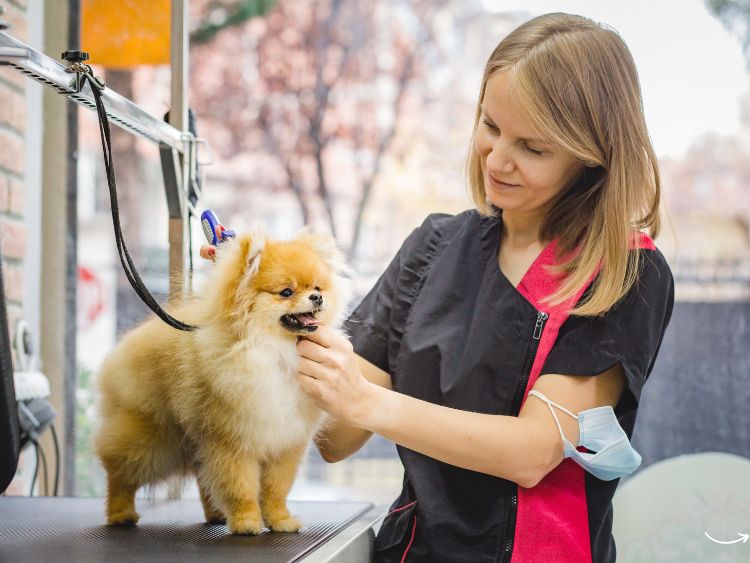Ever wondered what it takes to keep your furry friend looking fabulous? Well, look no further because “Pawsitive Pet Grooming” is here to unveil the secrets of keeping your pet in tip-top shape. Whether you have a pampered pooch or a fastidious feline, grooming is an essential aspect of pet care that goes beyond mere aesthetics. It’s about health, happiness, and bonding with your beloved companion. So, let’s dive into the world of pawsitive pet grooming and discover how you can make grooming a joyful and beneficial experience for both you and your pet.
Why Grooming is Essential
Health Benefits
Grooming isn’t just about making your pet look good; it’s about ensuring they feel good too. Regular grooming can prevent various health issues such as skin infections, matting, and parasites. By brushing your pet’s coat, you’re not only removing dirt and loose hair but also stimulating the skin and promoting healthy blood circulation.
Happiness and Comfort
A well-groomed pet is a happy pet. Imagine how uncomfortable it would be to have tangled hair, itchy skin, or overgrown nails. Regular grooming helps prevent these issues, ensuring your pet remains comfortable and content. Plus, grooming sessions can be a wonderful opportunity for you to bond with your pet, building trust and affection.
Getting Started with Pawsitive Pet Grooming
Essential Tools
Before you start, it’s crucial to have the right tools. Here’s a handy list of must-have grooming items:
- Brushes and Combs: Different breeds require different types of brushes. Invest in a quality brush suitable for your pet’s coat type.
- Nail Clippers: Keeping your pet’s nails trimmed is vital to their comfort and health.
- Shampoo and Conditioner: Use pet-specific products that suit your pet’s skin and coat.
- Ear Cleaners: Regular ear cleaning can prevent infections.
- Toothbrush and Pet Toothpaste: Yes, pets need dental care too!
Step-by-Step Grooming Guide
1. Brushing
Start with brushing to remove tangles and loose hair. This process also helps you check for any unusual bumps or skin issues.
2. Bathing
Use lukewarm water and a pet-friendly shampoo. Make sure to rinse thoroughly to avoid any residue that could irritate the skin.
3. Drying
Gently towel dry your pet, and if they’re comfortable, use a pet dryer. Be cautious with the heat setting to avoid burns.
4. Nail Trimming
Trim your pet’s nails carefully, avoiding the quick (the sensitive part of the nail). If you’re unsure, seek advice from a vet or professional groomer.
5. Ear Cleaning
Clean your pet’s ears with a vet-approved solution. Avoid using cotton swabs that could damage the ear canal.
6. Dental Care
Brush your pet’s teeth with a toothbrush and toothpaste designed for pets. This helps prevent dental diseases and bad breath.
Common Grooming Challenges and Solutions
Dealing with Shedding
Shedding is a natural process, but excessive shedding can be managed with regular brushing and a healthy diet. Omega-3 supplements can also help improve coat health.
Handling Anxious Pets
Grooming can be stressful for some pets. Create a calm environment, use treats as positive reinforcement, and take breaks if needed. Gradually, your pet will associate grooming with positive experiences.
Tackling Tangles and Mats
For long-haired breeds, tangles and mats are common. Use a detangling spray and a slicker brush to gently work through the knots. Regular brushing can prevent mats from forming.
Professional Grooming vs. DIY Grooming
When to Seek Professional Help
While DIY grooming can be a bonding experience, there are times when professional grooming is necessary. For instance, if your pet has severe matting, skin issues, or requires breed-specific styling, it’s best to consult a professional groomer.
Choosing the Right Groomer
Look for groomers who are certified and experienced. Read reviews, ask for recommendations, and visit the salon to ensure it’s clean and well-maintained. Your pet’s comfort and safety should be the top priority.
FAQs
How often should I groom my pet?
The frequency of grooming depends on your pet’s breed, coat type, and lifestyle. Generally, dogs should be brushed weekly and bathed every 4-6 weeks. Cats can groom themselves but benefit from weekly brushing.
Can I use human shampoo on my pet?
No, human shampoos can be too harsh for pets and disrupt the pH balance of their skin. Always use shampoos formulated specifically for pets.
What should I do if my pet is scared of grooming?
Start slowly and create a positive association with grooming. Use treats, take breaks, and be patient. If your pet remains fearful, consider consulting a professional groomer or a vet for advice.
How can I prevent my pet’s nails from splitting?
Regular nail trimming and using a nail file can help prevent splitting. Ensure you’re using sharp, high-quality clippers.
Is it necessary to clean my pet’s ears?
Yes, regular ear cleaning helps prevent infections. Use a vet-approved ear cleaner and clean the ears once a month or as recommended by your vet.
Summary
Pawsitive pet grooming is more than just a routine; it’s a way to show your pet love and care. By incorporating regular grooming into your pet care routine, you’re not only enhancing their appearance but also contributing to their overall health and happiness. Remember, the key to successful grooming is patience, consistency, and the right tools. So, roll up your sleeves, grab those grooming tools, and embark on a journey to make your pet look and feel fabulous!
Authoritative Links
- American Kennel Club: www.akc.org
- ASPCA: www.aspca.org
- PetMD: www.petmd.com
- Veterinary Partner: www.veterinarypartner.com
- The Humane Society of the United States: www.humanesociety.org

